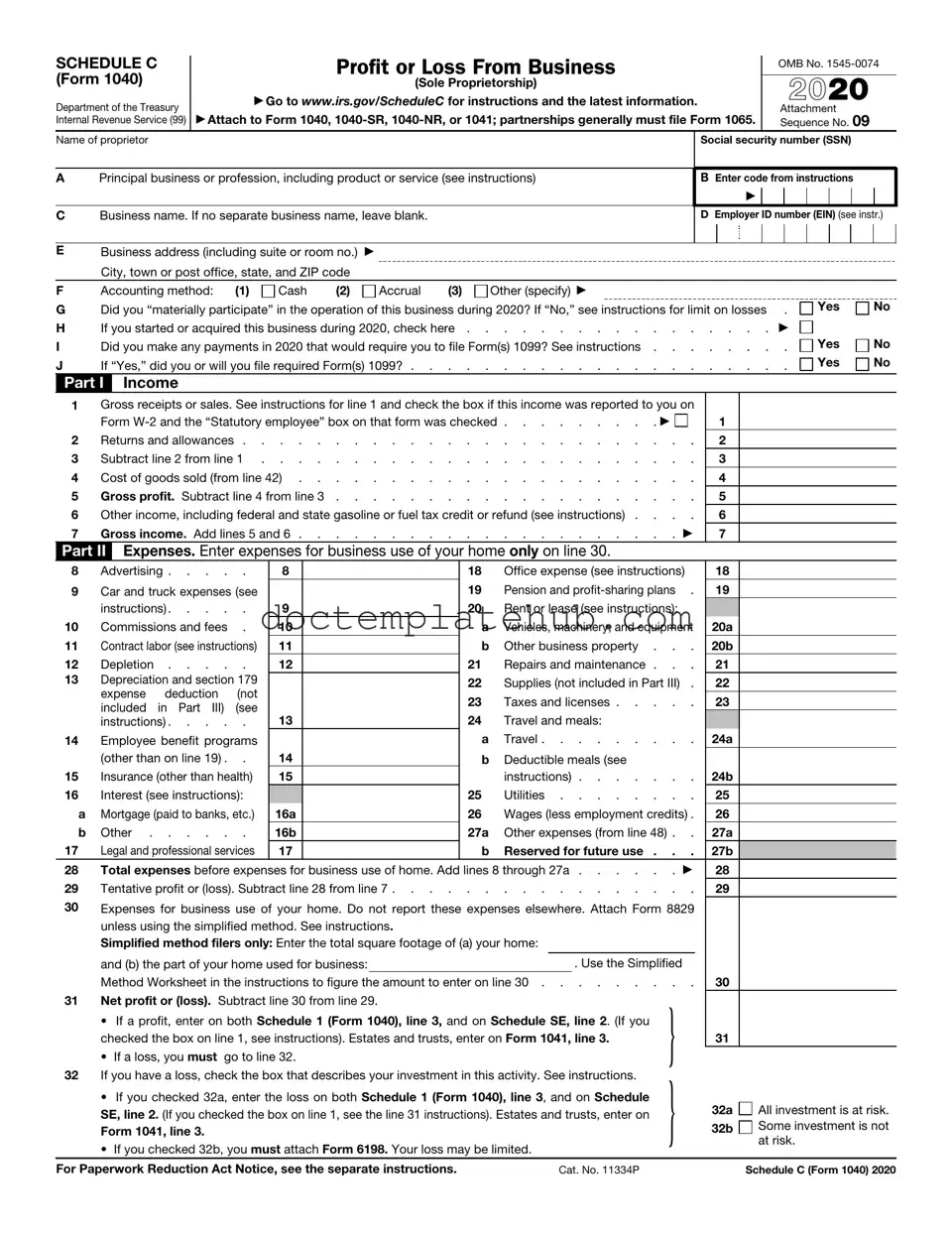What is IRS Schedule C?
IRS Schedule C is a tax form used by sole proprietors to report income and expenses from their business activities. It is part of the individual income tax return, Form 1040. If you run a business as a sole proprietor, you must file this form to calculate your net profit or loss, which is then reported on your Form 1040. This form helps the IRS understand how much money you made and what expenses you incurred in running your business.
Who needs to file Schedule C?
Individuals who operate a business as a sole proprietor need to file Schedule C. This includes freelancers, independent contractors, and anyone who earns money from self-employment. If your business is structured as a partnership, corporation, or limited liability company (LLC) taxed as a corporation, you would not use Schedule C. Instead, different forms would apply based on your business structure.
What information do I need to complete Schedule C?
To fill out Schedule C, you will need various pieces of information. Start by gathering details about your business income, including sales, services provided, and any other sources of revenue. Next, collect records of your business expenses, such as rent, utilities, supplies, and wages. It's also helpful to have information about your vehicle expenses if you use a car for business purposes. Accurate records will ensure that you can report your income and deductions correctly.
How do I report income on Schedule C?
Income is reported on the top section of Schedule C. You will list your gross receipts or sales, which is the total amount earned from your business before any expenses are deducted. If you had returns or allowances, those should be subtracted to arrive at your net income. Make sure to keep documentation of all income sources, as the IRS may require proof if they have questions about your reported figures.
What types of expenses can I deduct on Schedule C?
Many business expenses can be deducted on Schedule C, which can significantly reduce your taxable income. Common deductible expenses include rent, utilities, office supplies, advertising, and travel costs related to business activities. Additionally, if you use part of your home exclusively for business, you may qualify for a home office deduction. It's crucial to keep receipts and records for all expenses to substantiate your deductions.
What is the difference between net profit and net loss on Schedule C?
Net profit is the amount you earn after subtracting your total business expenses from your total income. If your expenses exceed your income, you will report a net loss. A net profit is subject to self-employment tax, while a net loss can offset other income on your tax return, potentially lowering your overall tax liability. Understanding these figures is essential for accurate tax reporting.
When is Schedule C due?
Schedule C is due on the same date as your individual income tax return, which is typically April 15 each year. If you need more time, you can file for an extension, but remember that any taxes owed must still be paid by the original due date to avoid penalties and interest. Keeping track of deadlines is vital to ensure compliance with IRS regulations.
Can I file Schedule C electronically?
Yes, you can file Schedule C electronically using various tax preparation software programs. Most of these programs guide you through the process, making it easier to enter your income and expenses. Electronic filing can expedite the processing of your tax return and may lead to quicker refunds. However, ensure that you have all your documentation ready before you start the e-filing process.
